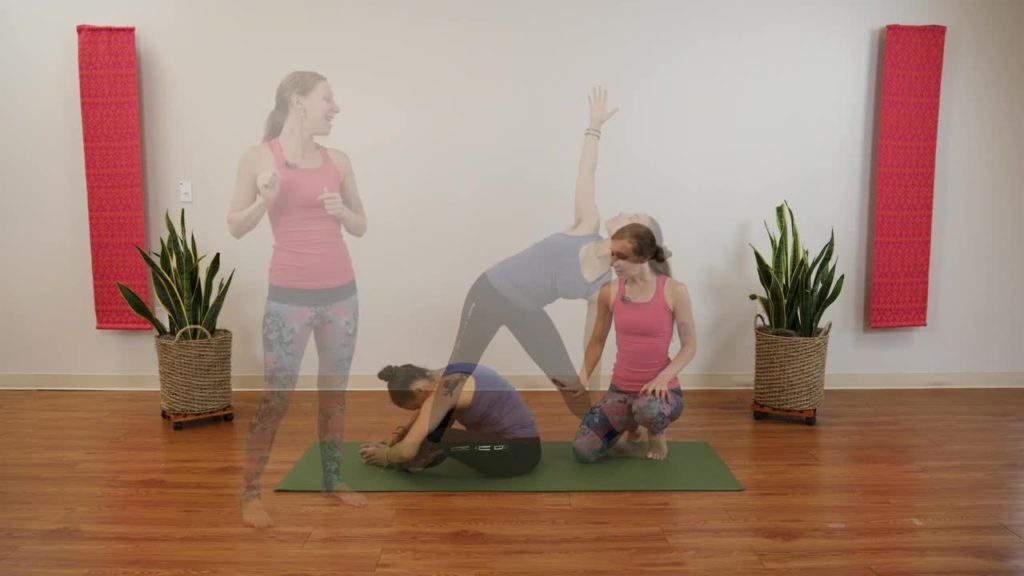
Why your Nervous System Wants You to Rethink your Yoga Asana Practice
This week’s blog post is by Grace Millsap, a yoga teacher, Ayurveda practitioner, and sparkly activist-yogi. Before she was a full-time yoga teacher, she worked in neuroscience and continues to draw connections between her yoga training and her science background.
———————————————————
For over 5,000 years, some of the greatest minds in both philosophy and science have studied the nervous system. In the last 30 years, the field of neuroscience has taken off with the discovery of modern imaging techniques. No stone has been left unturned, including spirituality, mindfulness, and of course, yoga!
Your Body’s Stress Response
Let’s start by talking about the nervous system (and specifically the sympathetic nervous system) in relation to stress response. Simplistically stated, something happens (a stimulus!) and the brain – the largest organ in the nervous system – decides if it’s a threat. This decision happens in the middle of the brain, with major input from the amygdala (which processes emotions) and the hippocampus (which houses past experiences), and some help from the frontal cortex (your main decision making part of the brain).
Once the brain decides something is a threat, it’s go time. The signal “DANGER!!” travels through the relay centers of the brain (thalamus, hypothalamus, and pituitary gland) and ends up in the kidney, signaling the creation of cortisol and epinephrine (adrenaline). These magical packets of information travel to the rest of the body. They lead to an increase in heart rate, breathing and blood flow and signal the muscles to tighten in preparation to respond. In these milliseconds, resources (blood, glucose, energy, and awareness) move away from the digestive and immune systems to the arms, legs, and brain so we can fight, flight, or freeze. This response evolved out of necessity to respond quickly to predators.

Fight-or-Flight
The problem? Many of us are living in a constant state of a hypervigilant nervous system due to an over-triggered and unregulated stress response. We also need time to rest and digest (your parasympathetic nervous system). It’s important to have time to digest not just our food but also our life experiences and emotions. Over time, all that extra cortisol being released into our hippocampus can become toxic, making it more challenging to recall or create memories. It can also lead to weight gain, mood swings, and other physiological interferences.
This overactivity is partly due to our amygdala’s influence in the beginning stages, and the ways in which fear often drives, or overrides, the decision-maker. Also, partly due to a nervous system efficiency hack expressed best as “whatever fires together, wires together” (Donald Hebb, 1949). We’ve prewired our nervous systems to over respond.
Sources of Stress
A little bit of hyperbole: we are living our lives as if there are tigers lurking in our inboxes, or the whole world is against us. Traffic, constant connection through our phones, lack of work boundaries; all coupled with tendencies to numb or run from silence, have contributed to our bodies’ inability to rest, restore, and recalibrate. Put into other terms, we are spending too much of our waking lives in a sympathetic nervous system state (fight or flight), when it’s necessary to have more of a balance with the parasympathetic nervous system state (rest and digest). Most people genuinely don’t know how to rest, and may be inadvertently sending themselves more out of balance.

A Balancing Act
So how can your yoga practice help? Much of modern yoga asana (hot, power, push-to-your-edge style classes) may be doing our nervous systems more harm than good. I’m definitely talking to you if you skip savasana, or cut out as soon as the floor sequences begin! Luckily, there are tools for our yoga practice that can help keep our nervous system in balance.
My favorites include:
- Grounding as a focus (focus on the feet and pelvis)
- Longer exhales and more time to release
- Use ALL the props! Support, support, support your body
- Extra time in forward folds and twists
- Practice with your eyes open, keep them oriented on the horizon.
- Long(er) savasana
- Yoga Nidra
There’s no one-size-fits-all for a yoga practice. While these suggestions may work for some, others may benefit from a more energizing practice. Give yourself permission to adapt your practice daily to aid your nervous system. Maybe try this challenge: stay for savasana!!
Check out Grace’s Nervous System Reset videos on YogaVibes. With both an asana practice and a breath and meditation video, you can choose your reset style.
grounding, nervous system, neuroscience, relaxation, yoga asana